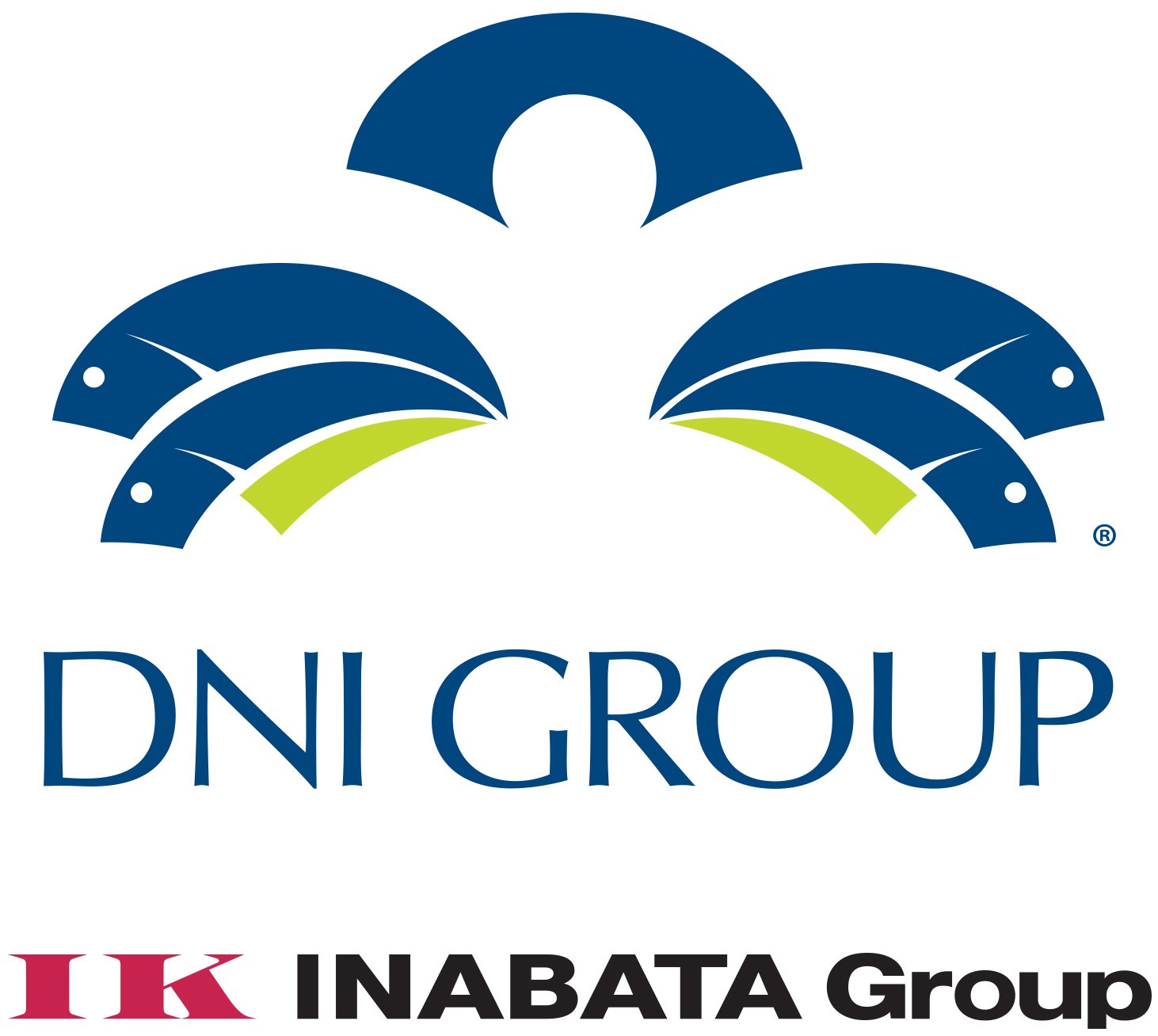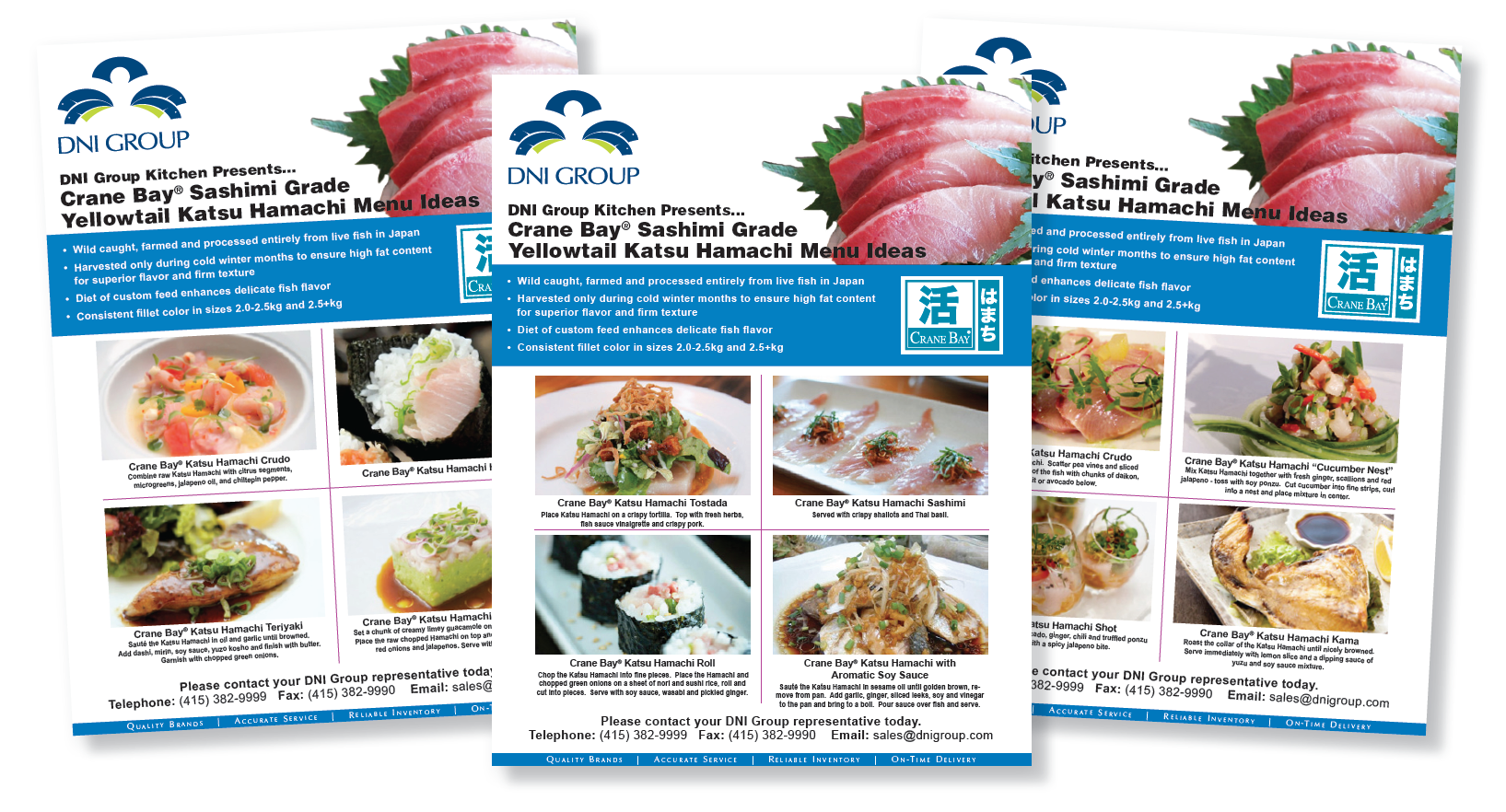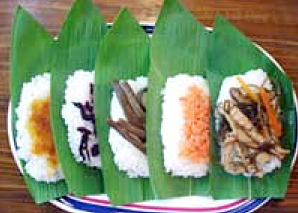SPRING 2017
Welcome to the Spring Edition of our 2017 Quarterly Newsletter. In this issue you will find a range of industry wide articles on seafood trends along with product information and a peek at a slice of Japanese culture. Here are a few of the topics you can read about:
- Our product spotlight focuses on Crane Bay® Sashimi Grade Katsu Hamachi -
the 2017 FILLETS and LOINS are here! - Read up on shrimp activity happening in Thailand and the United States
- Take a look at Niigata, The Rice Capital of Japan, home to the bountiful harvest so essential to the Japanese diet
- The Industry News segment reviews the Seafood Expo held in March in Boston
- Learn why Chile is planning to restructure its salmon production
- And lastly, our blog weighs in on balancing "Supply Trend" with "Market Trend" in the seafood industry
We hope you enjoy this issue and as always, thank you for your continued support.
PRODUCT SPOTLIGHT: 2017 Crane Bay® Katsu Hamachi
Katsu Hamachi Fillets and new this year...KATSU HAMACHI LOINS
Hamachi is here!! We are excited to kick off the new season of Crane Bay® Sashimi Grade Katsu Hamachi with 2017 inventory that has just arrived from Japan. This year, in response to market demand and customer preferences, we have added Crane Bay® Katsu Hamachi LOINS to our product line.
You will find the same individual packages with clearly marked specifications and an absorbent inner mat for better overall appearance. And to further improve our look, we have redesigned our master case with clear markings for product, weight, and size - take a look below
This year, you will get the same great sashimi quality yellowtail with all these features:
- Wild caught and farmed in the cold waters of Japan
- Always processed exclusively from LIVE fish
- Harvested only in winter at peak quality (when fat content in fish is highest)
- Consistent fillet color
- Available in 2-2.5 kg (2.0 kg minimum guaranteed) and 2.5+ kg
- Fully traceable from farming through transport and processing in Japan
- Core Frozen Sushi Safe
INTRODUCING: Katsu Hamachi Loins
We are excited to add Crane Bay® Katsu Hamachi Loins to our line of sashimi grade seafood products. We find there is a growing trend among chefs who prefer loins over fillets. Some reasons are obvious - the loins are skinless and ready to prep. There is no collar to remove as you do with the fillet. The loin provides 100% yield, no trimming or cleaning is required. And the loin is small, 1.1 lb.- 1.7 lb. (500-800g) per piece so it’s easy to control usage and maintain inventory. Each case is a mix of back and belly cuts and contains 12-20 loins for a total of 22 lbs. per case.
Katsu Hamachi Crudo of blood orange, radish, marinated fennel and yuzu citronette
PRODUCT SPECIFICATIONS:
If your customers are new to Katsu Hamachi, below are several menu ideations for them to try.
Crane Bay® Katsu Hamachi is available at all three of our warehouse - Los Angeles, CA, Newark, NJ and Miami, FL. If you need further information, pricing or a sample, please just give us a call.
RECIPE IDEA: Crane Bay® Katsu Hamachi
Sesame Crusted Katsu Hamachi with Edamame Soba Noodle Salad
Showcase your sashimi grade Crane Bay® Katsu Hamachi in this beautiful, healthy salad. Begin by toasting the black and white sesame seeds until fragrant. Lightly oil the hamachi and cover the entire surface with the seeds. Wrap in plastic and place in refrigerator.
Prepare the soba noodles then toss in a dressing of soy sauce, rice vinegar, sesame oil and honey. Portion the noodles into a serving bowl. Top with edamame beans, cucumbers, shredded carrots, bell pepper, red cabbage and peas. Slice the Katsu Hamachi and place on top of the vegetables. Serve with additional soy sauce and lime wedges.
SHRIMP UPDATE: Thai Shrimp's improved survival rate will boost production
Farmed shrimp survival rate up 15% with new
stocking densities
Thailand's change in farmed shrimp production strategies over the years is paying off and this year producers are expecting a 10-20 percent increase in production, said Siam Canadian General Manager Satasap Viriyanantawanit.
"We used to use a high density, super intensive farming method and we had to use an excessively high volume of feed which caused issues," he told IntraFish. However, upon switching to lower density stocking for the shrimp ponds, the survival rate changed from 75 per cent to 90 percent. "We now have the same output despite lower stocking because the survival rate is higher," he said. "Also, the cost of the feed is much lower now because 60 percent of farming costs is the feed."
This change came about based on research but especially because of past issues with EMS, which at times lowered the survival rate to 25 per cent. "EMS made farmers change, become flexible and open to new research and technology," said Viriyanantawanit.
Thailand's largest farmed shrimp export market is the United States. About 40 percent of global production goes to the US.
- Taken from Intrafish.com, March 2017
US Shrimp Consumption Poised to Take Off With Other Seafood Markets at Record High Prices
Record high prices for many popular seafood items in the US market are likely to support more shrimp consumption in 2017 given the item's relatively stable price and a strong supply outlook.
During last week's Seafood Expo North America in Boston many traders talked about record or near record high pricing for a variety of seafood items. A look at Urner Barry quotations show high market prices for salmon, snow crab, king crab and mahi-mahi.
The following chart compares the prices for these items compared to shrimp since 2012.
Since then, snow crab prices are up over 44 percent and at record levels. Urner Barry's Salmon Index, which is a calculation of Chilean, Canadian and European product is up 26 percent and at an all-time high.
Frozen mahi prices are up 19 percent from 2012 to a record high, while frozen king crab prices are up 16 percent and in record territory.
Now shrimp prices are up 19 percent from 2012 but the market is down considerably from record highs set during disease-induced supply shortages in 2013 and 2014. Compared to these other seafood species, the shrimp market represents a value, particularly with a very stable supply outlook for 2017.
It was reported during the National Fisheries Institute's Global Seafood Market Conference in San Francisco this past January that shrimp consumption is prime for growth this year.
"The majority of consumers are very comfortable ordering shrimp at their favorite restaurant and preparing shrimp at home. Look increased consumption of larger shrimp, Peel N' Eat Shrimp and Head On Shrimp to replace other species on buffets," the Shrimp Panel said. "For entrees look for larger sizes to replace other species. Today many larger sized shrimp are priced equal to or less than snow crab legs."
- Taken from SeafoodNews.com, March 2017
SHRIMP INDEX:
INDUSTRY NEWS: Takeaways from the Seafood Show Floor
Below are excerpts taken from an article published on
IntraFish.com by Drew Cherry sharing his thoughts on the annual Seafood Expo show held last month in Boston...
A few things really stood out at this year's Boston seafood show.
Another year, another Boston. While current geopolitics might dictate a dour mood, there was a spring in the collective step even among sectors -think smoked salmon, Alaska Pollock, tilapia and pangasius - that one would think would be down in the dumps.
Why the smiles? Well I put it down to a general belief in the future of the industry. Slowly, surely, seafood is taking its rightful place in the world and it seems like this industry may finally be finding out how to capitalize on a protein that has everything going for it. Walking the floor this year, there are some clear trends that jumped out indicating some big changes ahead-mostly good ones.
Salmon is king. If it wasn't so already, this year only put an exclamation point on it: salmon is running the seafood show. Not only are the companies making more money than ever, but they are leading the way in product development, which is breaking the ice for others to follow.
Sustaina-what? Eco-labels aren't enough and it's showing. There were a lot more groups focusing on traceability and chain-of-custody this year and you sense that maybe - finally - the eco-label wheat has been separated from the chaff. Like it or not, we have what we have. That said, eco-labels alone aren't enough and they are not necessarily the ticket to entry anymore. A solid traceability system may trump a good-looking sticker and increasingly people are unwilling to accept "sustainable" as an answer.
Wild and farmed, living in perfect harmony. It's official, haters: the war is finally over. No, really. Let it go. Cooke and Icicle's shared presence heralds a new era and seeing farmed salmon side-by-side with wild and noticing how the innovations are crossing species is a refreshing thing.
Chile's ready for change. Nowhere was the focus on brands more clear than at the Chilean booths, with several of the producers making clear efforts to reposition a sector that has faced phenomenal challenges over the years. The group announced a new plan to shake up the US Salmon market: the Chilean Salmon Market Council. Chile has done an incredible job developing the fresh salmon market and now its new mission is to help grow it further, and do it by not fighting for market share but by pushing provenance.
Focus on the protein. Seafood has a major advantage over rivals - high quality protein. And yet, for years, the industry has been missing out on an opportunity the rest of the food sector has taken advantage of. I saw some initial attempts to highlight "protein rich" and "protein packed" on consumer-facing packaging and I think the industry should rush to embrace it, particularly as terms like "natural" and "healthy" get more labeling scrutiny by authorities.
- Taken from www.Intrafish.com, March 2017
JAPANESE CULTURE: Niigata, The Rice Capital of Japan
Bountiful Harvest Essential to the Japanese Diet
Niigata Prefecture boasts astounding natural beauty. Looking out over the Sea of Japan to the West and surrounded by majestic mountains on its other three sides, lush rice fields fan out over the region's serene landscape. Niigata is known throughout Japan as the home of Koshihikari rice, sworn by many to be the best in Japan. The region is also known for its severe winters and heavy snowfall. The Echigo Plain, sometimes referred to as Japan's rice belt, stretches far and wide around the city of Niigata, home to around 810,000 people. Niigata's abundant harvest of high-grade rice yields some of the most sought-after sakes and rice crackers in Japan.
Rice at the Heart of Local Cuisine
Niigata boasts Japan's biggest harvest of rice, which is essential to Japanese cuisine. Koshihikari, Niigata's most celebrated variety of rice, is famous throughout Japan for its taste. Large variations in temperature between night and day, the fertile soil of the Echigo Plain, and the pristine melting snow that feeds into the rice paddies create a natural environment ideal for nurturing Niigata's exquisite rice. Koshihikari in particular benefits from this environment as a resilient and savory rice variety with a delicate sweetness all its own. When freshly cooked, it is fragrant and tasty enough to be eaten on its own right out of the rice cooker.
Sasazushi
Sasazushi (bamboo leaf sushi) is a delicacy made with rice and enjoyed especially in Western Niigata and the Joetsu region. Sasazushi recipes vary from family to family, but generally rice seasoned with vinegar is molded into small oval shapes and placed on bamboo leaves. Such toppings as mountain vegetables and mushrooms marinated in soy sauce and sugar and omelet are laid out on top of the rice, producing a vivid, colorful feast. The toppings take a lot of time and effort to prepare, but it is worth it to see the joy that sasazushi brings to people's faces, particularly at festivals and special occasions.
Sake made in Niigata Prefecture
Fine Rice and Pristine Water Yield Exquisite Sakes Niigata is also renowned for its sake, Japan's traditional alcoholic beverage made by fermenting rice. Plentiful high quality rice combined with the pristine waters that flow from heavy mountain snowfalls in the region make for exquisite sakes. Local sake breweries in Niigata meticulously brew a wide selection of sakes that are revered nationwide for their dry, sharp finish and refreshingly crisp flavor.
There are many wonderful varieties of Japanese sake such asjunmai-shu, made from only water and rice, and namazake, which has a clean flavor and is not heated during the brewing process. Sake can be enjoyed chilled or warm, and a fine variety thoughtfully selected is sure to complement the best of either Japanese or Western cuisines.
Kaki-no-tane
Crackers from Japan's Rice Belt Niigata produces a vast assortment of rice crackers and has by far the highest production of these savory treats in Japan prepared by its many famous rice cracker manufacturers. Rice crackers are either grilled or deep-fried and are dabbed with soy sauce or other seasonings. Varieties of the snacks produced in Niigata include the hard-textured sembei rice cracker and the lightly crunchy pea-sized arare treat.
The persimmon is a popular fruit in Japan, and Niigata's best-known rice cracker snack is called Kaki-no-tane, literally "persimmon seeds." Shaped like the seeds of the popular fruit, Kaki-no-tane are made by coating small arare crackers with a slightly spicy sauce, making for a fabulous snack that goes well with such drinks as beer and sake. In addition to the traditional Kaki-no-tane snack with the spicy coating, other popular variations include one that adds an additional coating of chocolate, creating an incongruent yet surprisingly tasty sweet and spicy blend.
-Taken from Trends in Japan
SALMON UPDATE: Farmed Salmon Prices are Spiking from Global Supply Shortages
Gary Greengrass, whose family has been in the business of selling lox for more than a century, isn't sure what to do about the climbing price of salmon, the only ingredient in the Jewish delicacy.
"I'm seeing more increases coming to me on the wholesale level," said Greengrass. "I'm trying to weather it a little bit before I decide to pass [the price increase] along" to consumers. Farm-raised salmon is currently retailing around $8 a pound. Wild salmon is orders of magnitude more expensive. Seattle's famous Pike Place market sells Coho salmon frozen at sea for $49 a pound.
According to data collected by Nasdaq, wholesale salmon prices for fish farmed for export in Norway, the world's largest salmon producer, have surged more than 13 percent over the past four months. That continues a trend from last year, when Norwegian prices spiked 40 percent, according to the Norweigan Seafood Council. Global supplies fell by about 9 percent in 2016.
Salmon farmers, who provide the vast majority of the fish sold to U.S. consumers, face myriad environmental challenges, including an outbreak of sea lice that global warming could be exacerbating, say scientists. The parasites, which feed on the fish's blood and tissue, reportedly are growing immune to the pesticides that producers are using to battle them.
Chilean growers also encountered an algae bloom last year that killed more than 135,000 tons of the fish, further depleting supplies. Chile is the world's second-largest salmon producer.
"It has definitely gotten quite expensive," said John Sackton, editor and publisher of trade news site Seafood.com. "Salmon prices have gone up, and the price of competing proteins such as beef and pork have gone down. This is obviously concerning the salmon producers."
Production in Scotland, another key supplier, dropped 4 percent to 171,000 tons last year because of an outbreak of another parasitic ailment called amoebic gill disease, according to the Guardian.
In response to these environmental challenges, salmon producers are raising fewer fish in their farms, which are essentially cordoned off areas in the ocean, further constraining supplies. Global demand for salmon remains strong, helped by public interest in healthy eating and love of sushi.
"When you reduce density [in fish farms], you get healthier fish, but you produce less fish," Sackton said. "Salmon has become such a staple -- not just in the U.S. -- it's getting a lot of traction in other markets around the world like Japan, Brazil and China."
Whether you order lox or sushi, don't be surprised when the bill comes.
-Taken from SeafoodNews.com






















